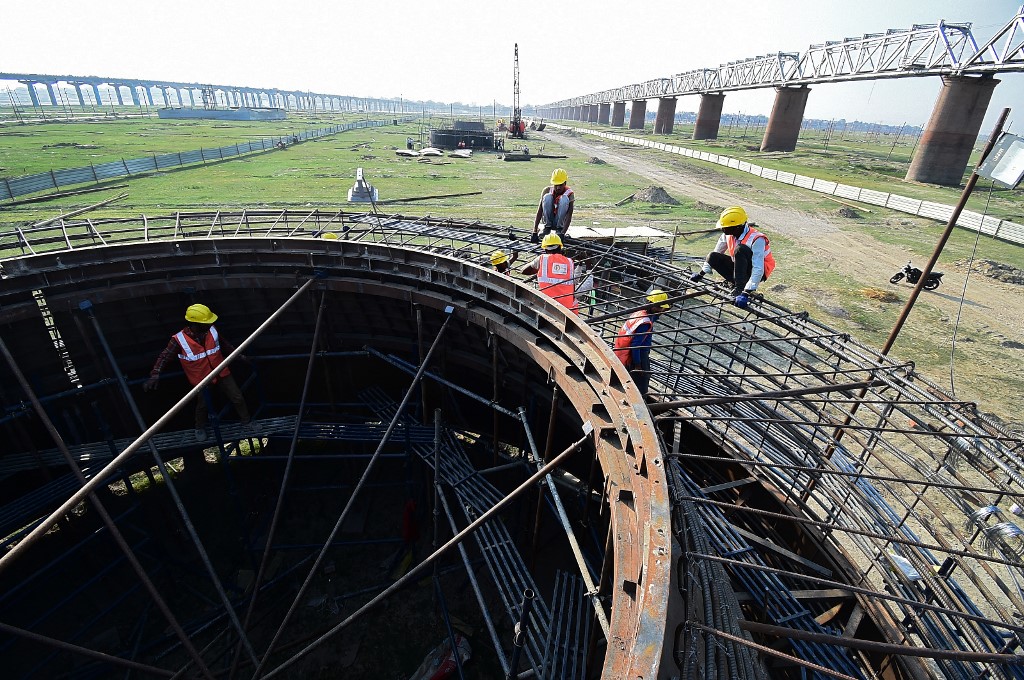(ATF) India’s mammoth infrastructure needs have shone a spotlight on the urgent demand for a development financial institution (DFI) after Asia’s third largest economy unveiled a 111 trillion rupee (US$1.7 trillion) capital outlay.
After the last major development funding institutions, such as ICICI and IDBI, morphed into commercial banks owing to balance sheet mismatches, a severe lack was seen in the infrastructure financing space. India requires investment worth Rs. 50 trillion ($777.7 billion) in infrastructure by 2022 to have sustainable development in the country.
It is now hoped that this gap will be filled by the proposed establishment of a Development Finance Institution (DFI) for Infra projects — a National Bank for Financing Infrastructure and Development (NBFID) — with an initial capital outlay of 200 billion rupees.
“There is an absolute need for creation of a new long-term financing institution, given the gestation, and the risk parameters,” Shubhada Rao, founder of economic advisory firm QuantEco Research told ATF Television.
“This will make good use of the gap that the commercial banks were unable to fill to finance long-term projects.”
Financial Institutions such as IDBI, ICICI and IFCI, which were originally mandated with this duty, but found that they no longer had access to low rates of funding after the government leveled the playing field between banks and financial institutions. These institutions had to raise funds from the market and the higher cost and shorter tenor mean they could only deploy it in retail assets like home loans, car loans or Micro, Small and Medium Enterprise (MSME) sectors.
“The important point was the early financial institutions were able to avail concessional funding through the government through the multilateral institutions, and as such that most of the funding, was very low,” said Rao, an experienced economist who was earlier with Yes Bank, Kotak Institutional Equities and Bank of Baroda.
“And that’s how they were able to own legs to the projects after your cost. However, since 1991 when India unleashed its broad-based, very significant reforms, including the financial reforms, it was difficult was for those development financial institutions to raise money at a really cheap rate.”
She said that these DFIs then converted into fully-fledged universal commercial banks, and that’s the reason why a lot of infrastructure funding since then was getting funded through commercial banks and multilateral agencies.
“But there was still a huge gap for the domestic long-term financial institution – that thirst needed to get quenched.”
The latest Indian budget raised its overall capital expenditure to 5.5 trillion rupees for FY22, an increase of 26% with focus on building quality infrastructure and accelerating GDP growth and it also proposed establishment of a National Bank for Financing Infrastructure and Development (NBFID).
Lack of manufacturing
After the 1991 economic reforms, India’s economy shifted focus, from farming to services, without going through an industrial/manufacturing stage. Economists say this jump from farming to services, without going through an industrial stage, is counter-intuitive and the economy should have leveraged on a low cost, export-oriented manufacturing strategy much before the 1991 reforms. But that did not happen.
“India missed the bigger link of manufacturing in its evolution of growth. Now clearly, the government has rightly emphasized the whole role of manufacturing. It’s not just for the creation of jobs, but it’s also equally important to make India with its natural advantages of raw materials of cheaper labour on a comparative scale, and the manufacturing excellence which naturally inhabits India.”
The strength of India’s case lies in its diverse business landscape, skilled workforce, and sizeable domestic market with growing disposable incomes. A BNP Paribas study showed monthly minimum wages in India are $73 compared with $320 in China, $132 in Vietnam and $127 in Indonesia.
“In terms of creating centers of excellence, something similar to what China has been doing, and in the recent past, how Vietnam has actually showcased its excellence for creating a very growth ready ecosystem. That’s where India needs to put in place a very good policy design, so that it becomes cost-effective in overall terms,” Rao said.
Earlier, India announced production-linked incentive (PLI) schemes for 13 sectors to encourage growth and boost exports. The schemes involve companies being awarded meaningful pre-set incentives for meeting production targets.
According to industry estimates, the schemes could generate $150 billion in new sales, and $70 billion of domestic value-add, or 1.7% of GDP by 2027. They could add a substantial 0.3% to annual GDP growth between 2023 and 2027, BNP Paribas estimates.
“Infrastructure’s the best multiplier that any country should adopt in terms of its investment design,” Rao said.
“It clearly shows that for the country to be able to have productivity gains, because infrastructure has backward and forward linkages. What are the forward linkages? It makes the whole ecosystem of creating national wealth at a very cost-effective way.”
























